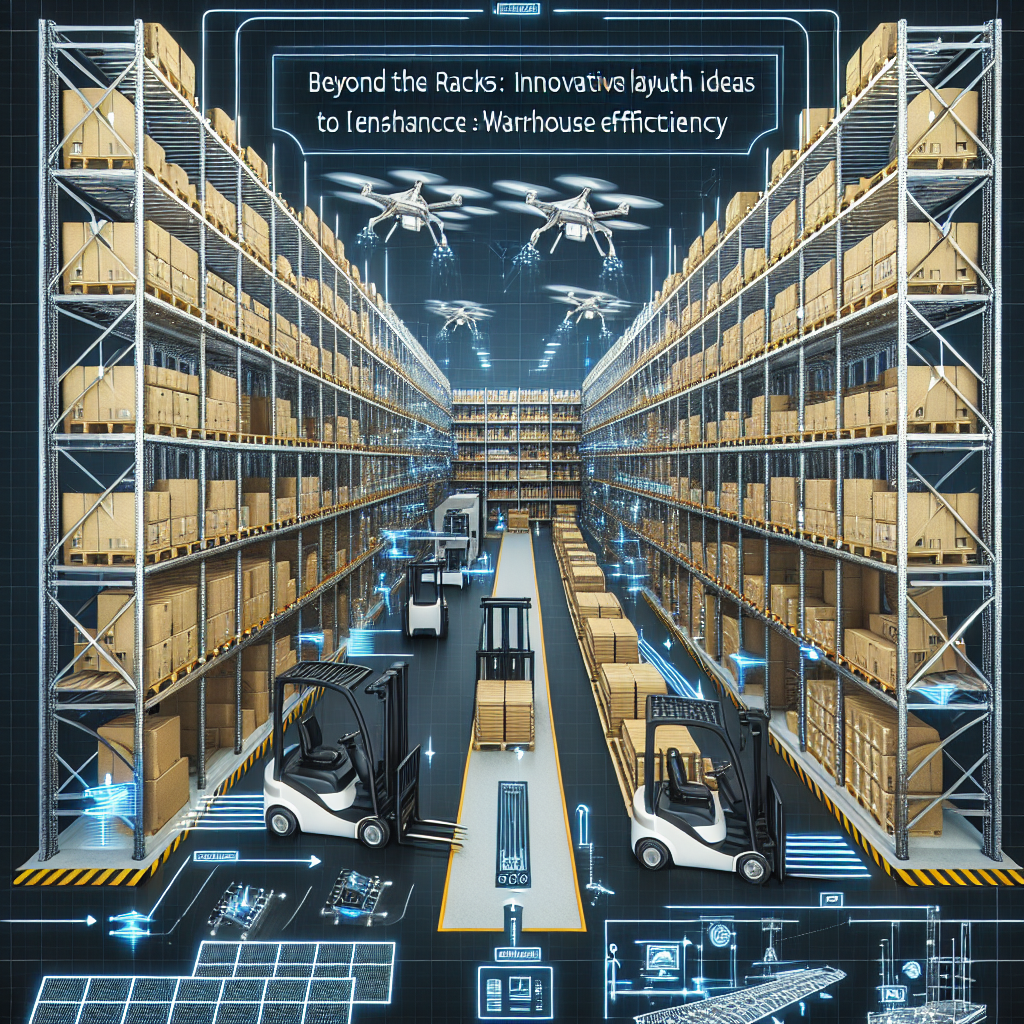Creating an efficient warehouse is no small feat. In the fast-paced world of logistics and inventory management, every square foot counts. With the rise of e-commerce, companies are reevaluating warehouse operation strategies to meet increasing demands. One crucial aspect that significantly influences efficiency is the layout of the warehouse itself. In this article, we’ll explore innovative layout ideas that not only maximize space but also streamline operations and enhance productivity.
Understanding Warehouse Layout
Before diving into innovative solutions, it’s essential to understand the fundamental types of warehouse layouts. Typically, warehouses fall into several categories:
- U-Shaped Layout: Promotes continuity in receiving and shipping.
- Straight-Through Layout: Best for high throughput, allowing quick movement.
- L-Shaped Layout: Combines storage and packing areas effectively.
By assessing your specific needs and work processes, you can select a layout that best fits your unique operational model.
Innovative Layout Ideas to Boost Efficiency
1. Implementing the 5S System
The 5S system—Sort, Set in order, Shine, Standardize, and Sustain—is a Japanese methodology that promotes a tidy and efficient workplace. By creating designated areas for every item and maintaining clutter-free zones, you can significantly reduce the time workers spend looking for items. Here’s how to implement it:
- Sort: Remove unnecessary items from the warehouse.
- Set in Order: Organize items for accessibility, promoting quicker retrieval.
- Shine: Keep the workspace clean, which boosts morale and efficiency.
- Standardize: Develop new protocols for maintaining organization.
- Sustain: Regularly review practices and adapt as necessary.
2. Utilizing Vertical Space with Racking Systems
One often-overlooked resource in warehouses is vertical space. By employing high-density racking systems, you can store more products in a smaller area.
Types of Racking Systems to Consider:
- Selective Racking: Offers easy access to all items.
- FIFO (First In, First Out): Ideal for perishable goods—ensures older stock is shipped first.
- Pallet Flow Racking: Uses gravity to move products toward the picking area.
3. Zoning for Efficiency
Zoning is the practice of dividing the warehouse into distinct areas based on product type, size, or picking frequency. By organizing your warehouse into zones, you can reduce travel time between tasks.
Best Practices for Zoning:
- Keep high-turnover items in easily accessible zones.
- Group similar items together to speed up picking.
- Ensure packing and shipping areas are close to the picking zones to minimize handling time.
4. Incorporating Technology
Technology is revolutionizing warehouse operations. Implementing warehouse management systems (WMS) can provide real-time data, enhance inventory management, and streamline workflows. Consider the following tech advancements:
- Automated Guided Vehicles (AGVs): Automate transportation within the warehouse.
- Barcode Scanning: Streamline the inventory tracking process, reducing errors.
- RFID Tags: Allow for real-time inventory data, enhancing accuracy.
5. Emphasizing Workflow Efficiency
Creating workflow efficiencies can significantly impact operation times. Analyze your current workflow and look for bottlenecks that slow down productivity. Additional tips include:
- Streamlining the picking process through batch picking, where multiple orders are fulfilled in one trip.
- Implementing cross-docking, where incoming items are immediately sorted and shipped out, minimizing storage time.
- Training staff on best practices to ensure smooth operations.
Human-Centric Design: Prioritizing Employee Comfort
While optimizing workflows and layouts is crucial, it’s equally important to prioritize the comfort and well-being of your staff. Happy employees are more productive. Consider these elements:
- Ergonomic Equipment: Ensure items are positioned to reduce strain and enhance picking speeds.
- Break Areas: Create spaces for employees to recharge, as fatigue can lead to decreased efficiency.
- Transparent Communication: Involve staff in layout decisions; their insights can yield practical solutions.
The Future of Warehouse Design
As technology continues to progress, the future of warehouse layouts will likely evolve. Concepts such as augmented reality (AR) for picking and advanced robotics will further shape operational efficiency.
Conclusion
A well-planned warehouse layout is the backbone of an efficient operation. By adopting innovative layout ideas—such as the 5S system, vertical space utilization, zoning, technological integration, and employee-centric design—you can create an environment that boosts productivity and morale. Beyond just racks, it’s the thoughtful organization and strategic planning that lead to success in today’s dynamic logistics landscape. As we look to the future, embracing flexibility in warehouse design will be key to staying competitive in an ever-evolving market.
By implementing these strategies today, you’ll ensure that your warehouse is not only functional but also prepared for the challenges of tomorrow. Are you ready to rethink your space?


